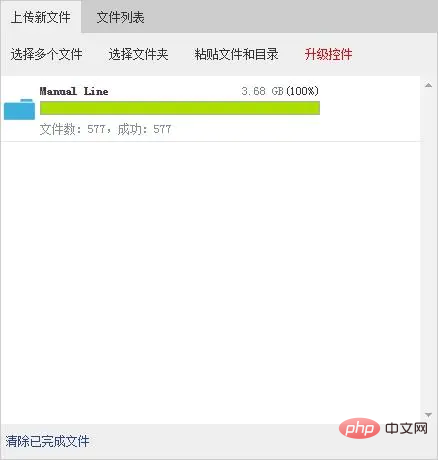
PHP uses the super global variable array $_FILES to record file upload related information.
1.file_uploads=on/off
Whether it is allowed to upload files via http
2.max_execution_time=30
The maximum script execution time is allowed. If this time is exceeded, an error will be reported.
3.memory_limit=50M
Set the script to be allocated The maximum amount of memory to prevent runaway scripts from occupying too much memory. This directive can only be set at compile time.
--It only takes effect when the enable-memory-limit flag is set
4.upload_max_filesize=20M
The maximum size of files allowed to be uploaded, this The command must be smaller than post_max_size
5.upload_tmp_dir
Temporary storage directory for uploaded files
6.post_max_size=30M
Allow the post mode to accept the maximum size
$_FILES['myFile']['name'] The original name of the client's last file.
$_FILES['myFile']['type'] The MIME type of the file, which requires the browser to provide support for this information, such as "image/gif".
$_FILES['myFile']['size'] The size of the uploaded file, in bytes.
$_FILES['myFile']['tmp_name'] The temporary file name stored on the server after the file is uploaded, usually the system default. It can be specified in upload_tmp_dir in php.ini, but setting it with the putenv() function has no effect.
$_FILES['myFile']['error'] Status code related to the file upload. ['error'] was added in PHP 4.2.0. The following is its description: (They became constants after PHP3.0)
UPLOAD_ERR_OK
Value: 0; No error occurred and the file was uploaded successfully.
UPLOAD_ERR_INI_SIZE
Value: 1; The uploaded file exceeds the value limited by the upload_max_filesize option in php.ini.
UPLOAD_ERR_FORM_SIZE
Value: 2; The size of the uploaded file exceeds the value specified by the MAX_FILE_SIZE option in the HTML form.
UPLOAD_ERR_PARTIAL
Value: 3; Only part of the file was uploaded.
UPLOAD_ERR_NO_FILE
Value: 4; No file was uploaded.
Value: 5; The uploaded file size is 0.
After the file is uploaded, it is stored in the temporary directory by default. At this time, you must delete it from the temporary directory or Move it somewhere else, or if it doesn't exist, it will be deleted.
That is, regardless of whether the upload is successful or not, the files in the temporary directory will definitely be deleted after the script is executed.
Attachment: How to modify the size limit of PHP upload files
1. General file upload, unless the file is very small. Like a 5M file, it will probably take more than a minute to upload.
But in php, the default maximum execution time of the page is 30 seconds. That is to say, if it exceeds 30 seconds, the script will stop executing.
This results in the failure to open For the situation of the web page, we can modify max_execution_time
Look for
max_execution_time
in php.ini. The default is 30 seconds. Change to
max_execution_time = 0
0 means no limit
2. Modify post_max_size to set the maximum size allowed for POST data. This setting also affects file uploads.
The default post_max_size of php is 2M. If the POST data size is larger than post_max_size, $_POST and $_FILES superglobals will be empty.
Find post_max_size. Change to
post_max_size = 150M
3. Many people will change the second step, but the maximum size when uploading files is still 8M.
Why? We also need to change a parameter upload_max_filesize to indicate the maximum size of the uploaded file.
Look for upload_max_filesize, the default is 8M and change it to
upload_max_filesize = 100M
In addition, it should be noted that post_max_size is better than upload_max_filesize.
Upload effect display :

PHP Chinese website has a large number of freePHP video tutorials, everyone is welcome to learn!
This article is reproduced from: https://www.jianshu.com/p/6460dc947209